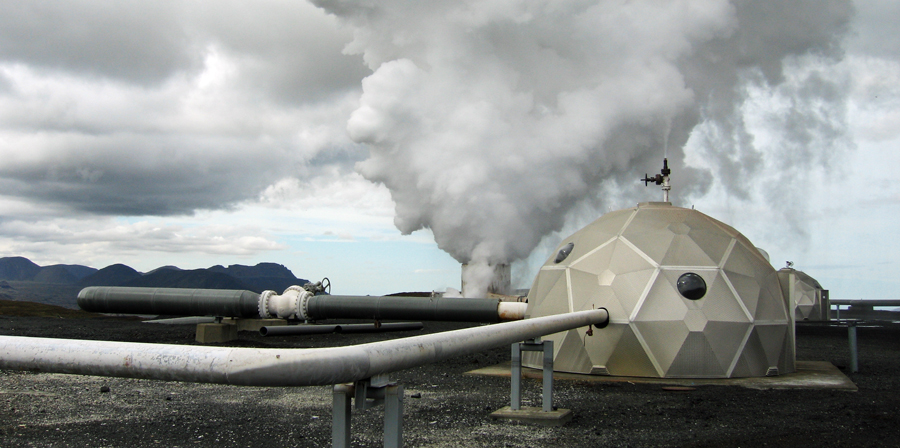February 17, 2015 – The Global Carbon Capture and Sequestration Institute (GCCS) in its most recent report tells us there are approximately a dozen large-scale CCS projects operating around the world. The total amount of captured carbon dioxide (CO2) amounts to less less than 30 million tons per year. Compare that to the amount of CO2 we humans put into the atmosphere annually – more than 39 billion tons in 2013 and an estimated 40 billion in 2014. That doesn’t even reach a single decimal point in the total of CO2 produced. As such it points out just how little has been achieved with CCS technology. Fortunately for us the oceans, forests and soils of the world mitigate a good percentage of these CO2 emissions with 24% absorbed by our oceans and 26% on land. But that still leaves an enormous gap between technological solutions to carbon reduction, and current realities.
It wouldn’t be wrong to say CCS is an abject failure to-date. With only one large-scale CCS project actually ongoing, the Boundary Dam power station in Saskatchewan, it appears that the technology’s promise is greater than its ability to deliver. And that’s because the industry that produces much of the CO2 sees little economic benefit from tackling emissions. It’s that simple.
If you are not familiar with the science behind carbon capture and sequestration, a good site to visit is CarbFix. You can also read previous postings on the subject at this blog site. A good foundational place to get started would be the article entitled, Is Carbon Capture and Storage Viable?
The principle of pumping capture CO2 in liquid form into underground storage appears to be workable. Some of the early projects found economic value in capturing what utility companies emitted and pumping the gas in liquid form into old oil fields to increase production. This is the economic model that made Boundary Dam possible. But the recent fall in world oil prices makes the rationale for future projects of this type far less economically attractive.
This trend cannot be ignored. The disincentives associated with CCS have once more led to another industry casualty – FutureGen. Conceived of in 2003, this was to be the first commercial US power plant to incorporate CCS technology. It was located in Illinois. Two weeks ago, however, the US Department of Energy (DoE) pulled out, a billion dollars poorer. The reasons cited, the inability to get private dollars in sufficient quantity to make the project a go.
A new power station project in Mississippi is scheduled to open sometime in 2015. Who knows, maybe its developer, the electric utility firm Southern Company of Atlanta, Georgia, in light of the DoE bailing from FutureGen, will change its mind and cancel. The only other CCS project in North America, Petra Nova, in Texas, is planned for completion in 2016. So if these two American CCS projects go live, it will mean only three for all North America.
The current global state for CCS isn’t much better than that happening here. GCCS in its most recent report points says that there are as many as 18 others planned or under construction around the world. Leading the way are China with four, the UK with three and Norway with two. But the total of 18 won’t even begin to make a significant dent in our CO2 output.
So what will change all this to make CCS fly? A price on carbon emissions – a tax that acts as both carrot and stick. Without it energy companies will continue to vent the gas into our atmosphere because there will be no disincentive to alter their behaviour.
GCCS in its recent report argues for changes in policy to make CCS viable, which it states is “essential in meeting global climate targets.” These include:
- Financial and policy support structures to turn potential CCS projects into actual ones so that they can be in operation by 2020.
- Complimentary emission reduction policies that encourage CCS investment.
- Funding exploration and appraisal of suitable underground CO2 storage capacity.
- Knowledge sharing, capacity development and implementation of other policies and legal frameworks during the course of this decade to enable an increase in the number of large-scale CCS projects globally by 2025-30 and beyond.
- Policies and funding for CCS projects beyond energy and utility companies to reduce CO2 emissions from industries such as iron and steel and cement, the second and third-largest source of human generated carbon emissions.
If CCS is to be a viable answer to human-generated CO2, then without a carbon tax and without the recommendations by the GCCS, this technology will not be one of the tools available to humanity to fight climate change.






















[…] cost. Where is the rest of the money to come from? Government. If true to form as we have seen in many past carbon capture projects, will the partners bail as the costs mount well beyond project estimates? My guess is highly […]